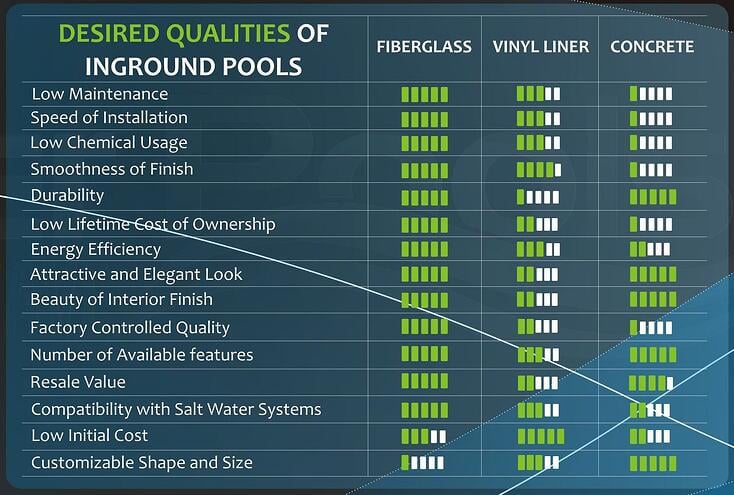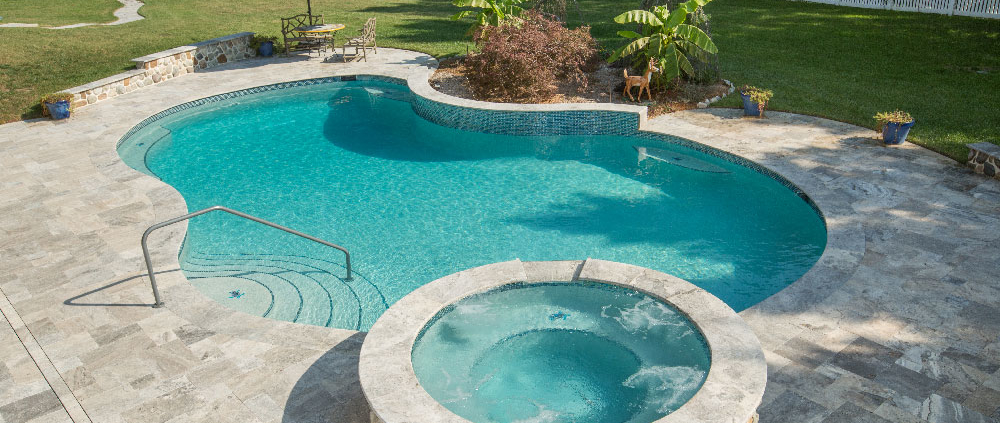Pool System Inspection
What does your Myrtle Beach Home Inspector look for?
The pool system is a relatively simple system with simple components that, when used and maintained properly, can last for a very long time. This article is going to identify all of the pool system components, how they work, and common problems found during a Myrtle Beach pool inspection.
Determining the Effective Lifespan of a Pool Structure

What are the different types of pools?
These are a few of the most common pool types used today.
Pool Circulatory Systems and Components
The pool circulatory system is comprised of several different working components with the pump motor or pool pump being the main functioning component. Without the pump, the pool cannot circulate pool water and the pool would become contaminated. Most pools in Myrtle Beach do not have pool heaters and sanitizers, but they are included in the article so that the reader can identify them if necessary. The pump, filter, and plumbing system are what makes the pool system function, while the heating system and sanitizing equipment add additional features. Below are all of the major pool system components names and identifying features.

Pool Plumbing System and Components
The plumbing system is tying all the pool system components together to provide the required circulation and is always under pressure. Jandy valves are used to divert or revert water to different locations or to increase and decrease pressure within the system. Check valves (clear plastic tubing or globe) are used to monitor the integrity of the system and provide visual insight in real time inside of the pressurized system. Below are the names of the most common plumbing system components.

Common Problems Found During a Myrtle Beach Pool Inspection
All of the concerns listed below are common during the Myrtle Beach Pool Inspection and are self explanatory. If any one of these concerns are seen during the inspection, the inspector will perform a series of tests and verify where the problem exists in the pool system.

Bonus: Water Testing & Water Quality
Typically, tests strips are used during the pool inspection to determine if higher levels of calcium (hardness) are present in the pool system. Higher levels of calcium in the pool system contribute to the breakdown of system components. It is also a good idea for the inspector to educate the home buyer on the importance of water quality and water balance and the appropriate chemicals needed to achieve them.
All of the system components may seem confusing when you are trying to assess a pool system. However, if you take a second to understand that water is simply exiting and returning to the pool structure on a continuous basis, it makes understanding the components and how they work much easier. Now you know that when pool water exits the pool it runs through the pump, which is then pumped to the filter, then through the heater, and finally through the sanitizing equipment, before returning back to the pool structure.
Me and my team at LAB Home Inspections hope you really enjoyed this article!
If you have specific questions about your home, or would like to schedule a home inspection, please contact Darren directly:
Darren Dawson, Certified Master Inspector (CMI)®
Myrtle Beach, SC
(352) 665- 9900



































Leave a Reply
Want to join the discussion?Feel free to contribute!